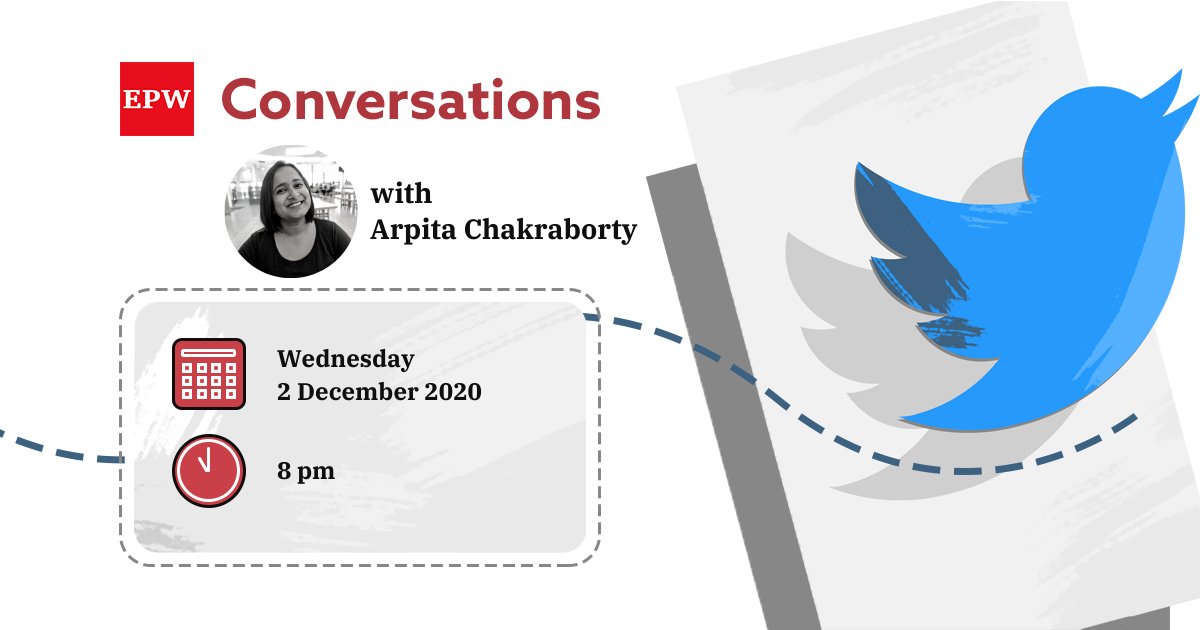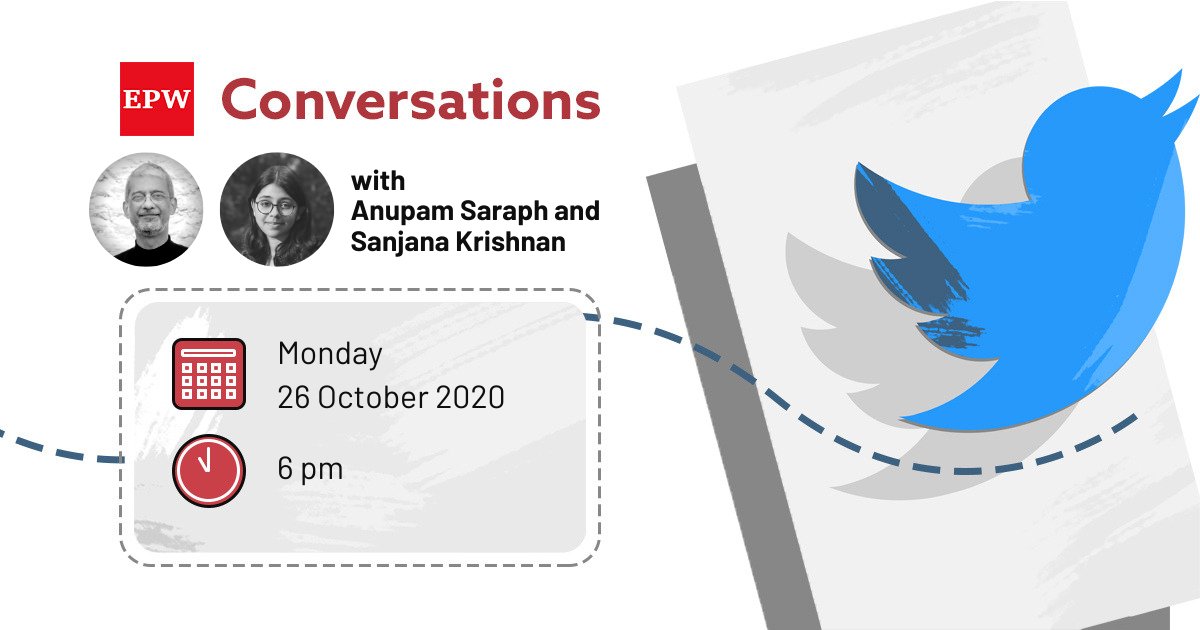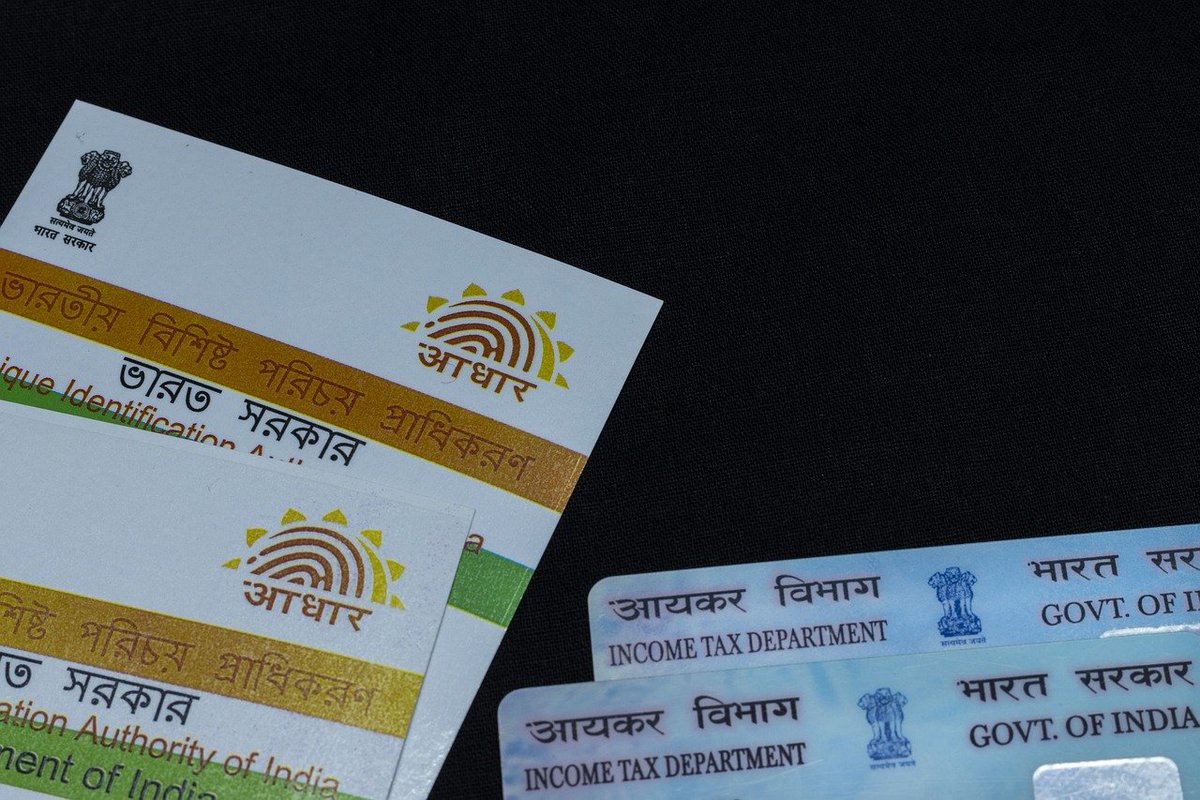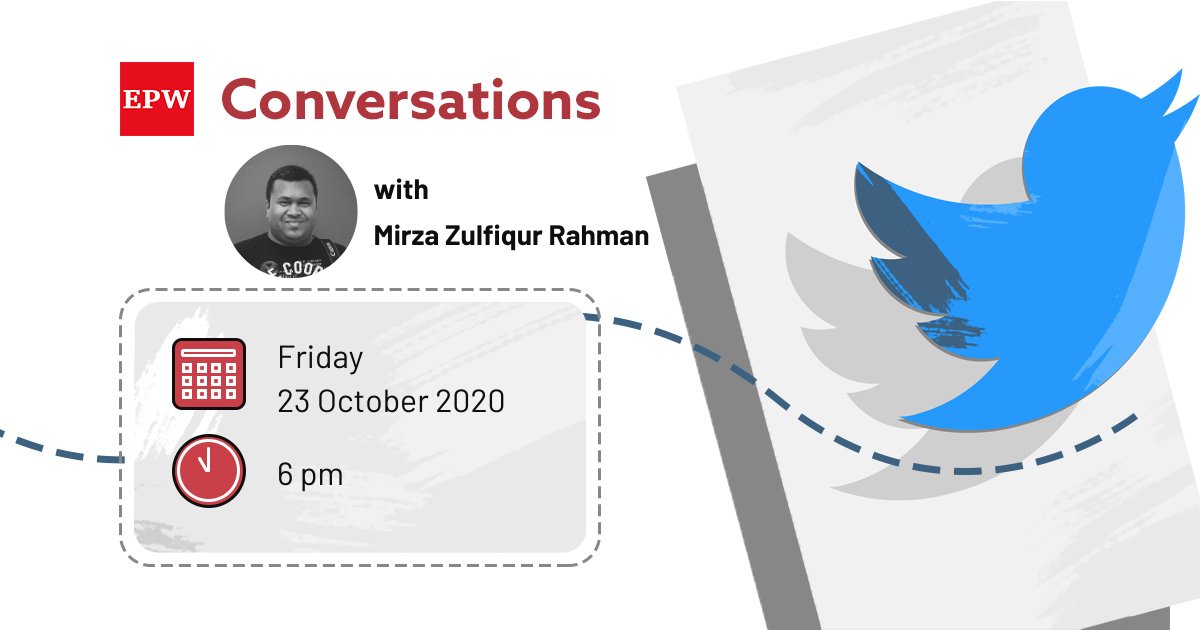
#EPWConversations: We are live with @vabhis, and we invite you to send your questions about public transportation in India in this thread. He will be tweeting through EPW's account for the next hour. 
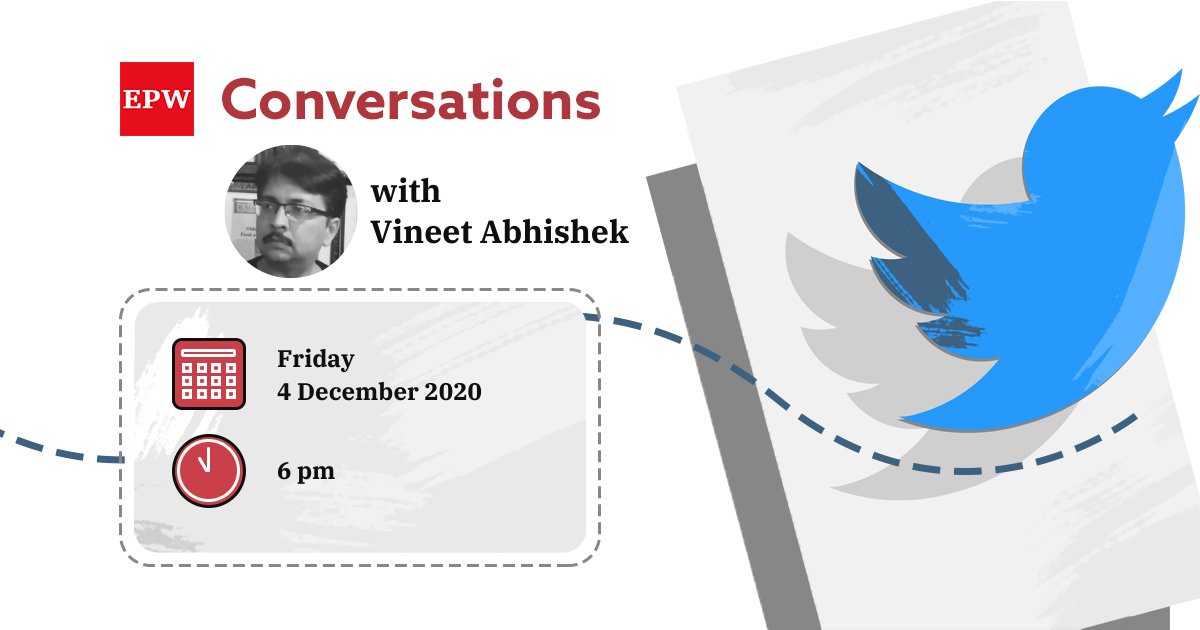
Our cities happen to be the places where distortions of development are amplified and more visible. Transport and urban equity is one major indicator to assess this distortion. One class of cities (particularly, metropolitan cities) gets priority over the smaller cities and towns
Similarly, within the city and towns, the more affluent class gets priority over the poor and underprivileged ones. | @vabhis
Inequity is visible on the following fronts — investments, policy focus, public discourse, and ultimately who ends up at the receiving end of the negative externalities. | @vabhis
Some of the widely employed methods to ease congestion on roads have created extremely inequitable car-only facilities. A case in point is that of Bandra–Worli Sea Link, which does not allow pedestrians, cyclists, two-wheelers, and auto-rickshaws. | @vabhis
As a matter of fact, these new infrastructural facilities benefit higher-income road users. Retrospective—rather than proactive planning—is what ails the urban policy and planning landscape almost everywhere in our country. | @vabhis
While the overall mobility has improved over the years, due to the high sprawl, the accessibility for various services for most city dwellers has gone down, and so has the overall speed in terms of vehicular traffic on roads. | @vabhis
Rapid urbanisation has also led to higher congestion in smaller cities and towns. Their road network is incapable of absorbing the rise in vehicular traffic. | @vabhis
The level of congestion in smaller cities can be estimated from the fact that 6 of the 20 slowest cities in India do not feature in the list of top 100 cities by population globally (as per a World Bank study on Indian cities). | @vabhis
To put things in perspective, Bhagalpur in Bihar, with a population of just 0.4 million, is slower than Chennai, which has a population of 8.7 million. | @vabhis
Trip lengths in non-metro cities are short (within a 6 km distance). More than 50% of the trips are done by the non-motorised transport mode. | @vabhis
However, owing to the lack of a developed public transport system or NMT infrastructure, city mobility is paralyzed and slow during all times of the day due to overdependence on personal motorized vehicles. | @vabhis
40% of people in urban areas either walk or use bicycles. However, they also have to bear the maximum brunt of our automobile centric city transport. | @vabhis
Although India has a smaller number of motor vehicles than the United States, its traffic casualties are far more. This proves that the negative impact of motor vehicles in India (and other developing countries) is far more than what it is in the developed world. | @vabhis
Cities with lower per capita income tend to have a higher share of commuters using cycles. However, these cities are the most vulnerable to losing their share of walking and cycling modes as they do not have well-developed public transportation systems. | @vabhis
Increasing congestion in cities creates a vicious cycle, particularly for cities where buses constitute a major mode of public transportation. Service delays stemming from bus operators force commuters to shift from buses to personal modes of transportation. | @vabhis
Urban public transport is mainly used by city dwellers who may be employed in the formal sector, and hence they can afford the fare. Buses are the predominant form of public transport in our cities. | @vabhis
However, are buses really on the priority list in public transport policymaking? After the JnNURM project, there has hardly any emphasis on public bus transport by the central government.
States have been left to fend for themselves. | @vabhis
States have been left to fend for themselves. | @vabhis
In any case, the presence of a viable and cheap bus system does not solve all the problems. Even the average bus fares are beyond the reach of low-income households. | @vabhis
A majority of these households are the ones who commute either by walking or cycling. Hence, the absence of a dedicated pedestrian and cycling infrastructure leads to the exclusion of a majority of these city dwellers. | @vabhis
A case in point is Mumbai’s MUTP, an initiative funded by the World Bank funded improve urban transport. Initially, the project had planned for some pedestrian traffic crossings. | @vabhis
However, all but 2 were dropped due to loan restructuring.
Why did a project worth $643 million fail to allocate substantial funds to improve facilities for pedestrians and cyclists? @vabhis
Why did a project worth $643 million fail to allocate substantial funds to improve facilities for pedestrians and cyclists? @vabhis
This speaks volumes about the inherent inequity in the urban transportation landscape in India. | @vabhis
Multilateral development banks, like the World Bank, have the capacity to steer policy narratives. However, they often end up promoting pre-existing inequities based on the sectors they choose to fund. | @vabhis
In Ranchi, about 44% of the trips are by walking or using cycles, even though less than 1% of the road network has sidewalks for pedestrians. Ranchi is India's 17th slowest city, even though it is the country's 38th most populated city. | @vabhis
While the state government should have established the basic urban transport infrastructure, it chose to go for a monorail (funded by the Japan International Cooperation Agency). | @vabhis
Luckily, the project was rejected by the central government on technical grounds, and now a new plan for a metro rail is under development now. Smaller cities are more prone to negative externalities of faulty urban transport planning than big cities. | @vabhis
Even though non-motorised systems can complement public transport, they are never given due attention. Again, the Jawaharlal Nehru National Urban Renewal Mission did not include a single project to improve pedestrian facilities or develop cycle tracks | @vabhis
• • •
Missing some Tweet in this thread? You can try to
force a refresh

